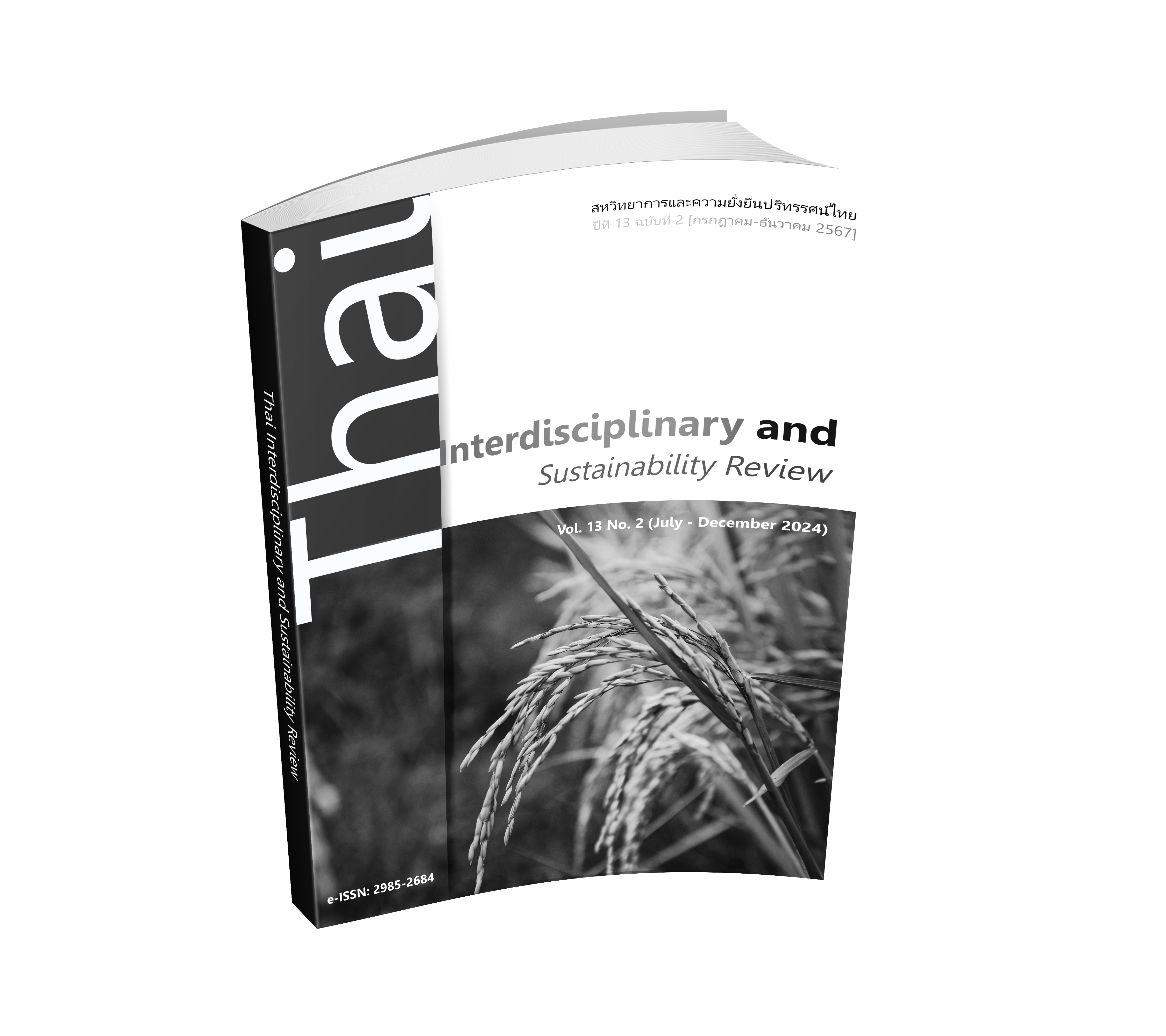GUIDELINES FOR PREVENTION AND SUPPRESSION OF ECONOMIC CRIME: ONLINE INFORMAL LOAN
DOI:
https://doi.org/10.14456/tisr.2024.23Keywords:
Economic Crime, Online Informal Loan, Prevention and SuppressionAbstract
This study aimed to 1) investigate the patterns and behaviors associated with online informal loans, 2) identify the challenges and obstacles in the prevention and suppression of such loans, and 3) develop effective guidelines for addressing cybercrime related to online informal loans. This qualitative research encompassed both document analysis and in-depth interviews with three key groups: 1) police officers involved in arresting individuals engaged in online informal lending or in the broader efforts to prevent and suppress these activities, 2) individuals previously convicted for operating online informal loans who have since been released from prison, and 3) victims of online informal loans. The findings revealed five primary patterns and behaviors in illegal online lending: 1) imposition of excessively high interest rates, 2) lack of clear terms and conditions, 3) inappropriate collection of personal data, 4) deception and forgery, and 5) neglect of risk perception. The study underscored the need for enhanced laws and regulations to implement stringent measures against online informal loans. Additionally, the deployment of technology to detect and prevent economic crimes was found to potentially increase user safety. Educating the public and raising awareness about the risks associated with online informal loans and ways to protect oneself were deemed crucial for helping consumers make informed borrowing decisions.
Downloads
References
ชญาวดี ชัยอนันต์. (2566). หนี้นอกระบบ-อยากจะกู้ ต้องรู้ทันหนี้. สืบค้นจาก www.bot.or.th/th/research-and-publications/articles-and-publications/articles/prachachat-chayawadee-May23.html.
Bankrate. (2022). Emergency Savings Survey. Retrieved from www.bankrate.com/emergency-savings-survey-2022.
Cohen, L., & Felson, M. (1979). Social Change and Crime Rate Trends: A Routine Activity Approach. American Sociological Review, 44, 588-608.
Consumer Financial Protection Bureau. (2019). Online Payday Loans and the Need for Better Regulation. Retrieved from www.consumerfinance.gov.
Doe, J. (2022). Online Lending Fraud: Emerging Threats in the Digital Financial Landscape. Journal of Digital Finance, 14(2), 115-130.
European Data Protection Supervisor. (2018). Data Protection in the Online Lending Sector. Retrieved from https://edps.europa.eu.
Federal Bureau of Investigation. (2021). Internet Crime Report 2020. Retrieved from www.fbi.gov/internet-crime-report-2020.
Federal Trade Commission. (2017). The Prevalence of Online Loan Scams. Retrieved from www.ftc.gov.
Financial Conduct Authority. (2020). High-Cost Credit Review: Final Report. Retrieved from www.fca.org.uk.
Jiao, H., Liu, S., & Liu, X. (2017). The spread of informal lending in China: A social network analysis. Journal of Asian Economics, 48, 89-101.
Liang, Y., Liu, Q., & Li, X. (2022). Cybersecurity risks in online lending: A systematic analysis. Journal of Financial Crime, 29(2), 312-329.
Reckless, W. (1972). The Crime Problem. New York: Appleton-Century-Crofts.
Smith, A., & Johnson, B. (2021). Regulatory Challenges and Solutions in Online Informal Lending. International Review of Financial Regulation, 14(3), 112-128.
Sutherland, E. (1939). Principles of Criminology. Pennsylvania: J.B. Lippincott Company.
Wang, J., & You, Y. (2021). Motivations and Behaviors of Online Informal Lending among Chinese Youth. International Journal of Social Economics, 48(6), 754-770.
White, C. (2023). Educating the Public: A Preventative Approach to Economic Crimes in Digital Lending. Financial Literacy Journal, 9(1), 75-90.
World Bank. (2016). Risks and Realities of Online Lending in Developing Countries. Retrieved from www.worldbank.org.
Xiao, H., & Wu, Z. (2021). Vulnerability and Victimization in Online Lending: A Socio-Economic Perspective. Journal of Consumer Affairs, 55(3), 789-809.

Downloads
Published
How to Cite
Issue
Section
License
Copyright (c) 2024 Authors

This work is licensed under a Creative Commons Attribution-NonCommercial-NoDerivatives 4.0 International License.









.png)


